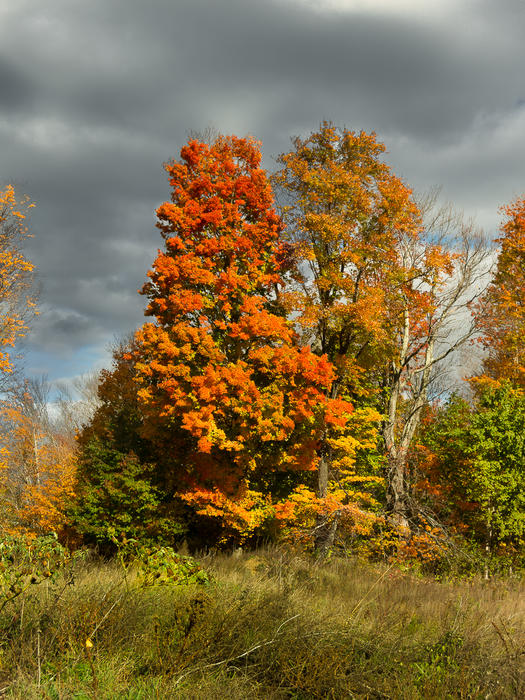

This is a great example of mutualism: a symbiotic relationship that is beneficial to all species involved. Overtime, these epiphytes form a layer of soil on top of the branches, which the tree then taps into through branch-top roots absorbing needed water and minerals. Bigleaf maple has the largest epiphyte (plants that grow on other plants) load of any tree in the Pacific Northwest tree.
BIG LEAF MAPLE FALL FULL
Its bark is full of water and nutritious calcium, supporting plants that grow on trees called epiphytes. It is important to the larger forest community for many reasons. The large leaves are traditionally used by many tribes in food preparation including covering food, in baking pits, and to lay fish on while cleaning it.Įcological Relationships: Bigleaf maple is a hospitable tree that willingly hosts many different species. Bigleaf maple is called the “paddle tree” by many Northwest tribes and is traditionally used for canoe paddles, basketry, house construction, cradleboards, bowls, spoons, and other implements. The inner bark of the branches can be harvested in the springtime and used to make strong cordage for rope and basketry materials. Traditional Technologies: Bigleaf maple wood burns clean and does not spark making it a preferred firewood in the summertime to prevent forest fires. When fritters are golden, flip, and let them brown on the other side. Once heated, dip maple flower clusters in the egg mixture, dust them with flour mixture, and place in the pan. Turn a medium-sized sauté pan on medium-high heat and add oil. Mix flour, baking powder, salt, and herbs or spices in a bowl. This is heated and reduced into maple syrup.

In early spring, bigleaf maple trees can be tapped to gather sap. Bigleaf maple leaves are traditionally used for pit roasting and for wrapping food. They become bitter and tough as they get larger. The tasty, young sprouting branch tips can be peeled then eaten straight or added to salads. Try eating the flowers straight, using them as a garnish on salads or soups, or add them to baked goods like pancakes. They are full of sweet nectar and pollen. Bigleaf maple can grow nine feet in a single year and can live as long as 300 years.įood: Bigleaf maple flowers are harvested in spring when they are budding on the tip and are fully open at the base of the flower cluster. Each spring, thousands of seeds germinate, but only a few survive through summer. Once fully developed in late summer, they travel like helicopters in the wind.īigleaf maple leaves fall in great quantities in the autumn, providing hiding places for insects and eventually breaking down into compost that contributes to healthy soil.

They emerge from the flowers looking like bunny ears popping out of a hole. Fruits are shaped like wings attached in a V pattern. Bees and other insects harvest the sweet nectar. Each flower is bowl-shaped, cupping many pistils with a downy fur at their base, resembling a tiny bird nest. They are greenish-yellow and hang in clusters. Flowers bloom in March through April before leaves emerge. Massive leaves have five tips like a hand and can grow over a foot in diameter. Older trees are often covered in mosses and licorice ferns. Young bark is green and smooth, while mature bark becomes furrowed and gray-brown in color. Identifying Bigleaf Maple: Bigleaf maple (Acer macrophyllum) thrives in wet forests and open fields.


 0 kommentar(er)
0 kommentar(er)
